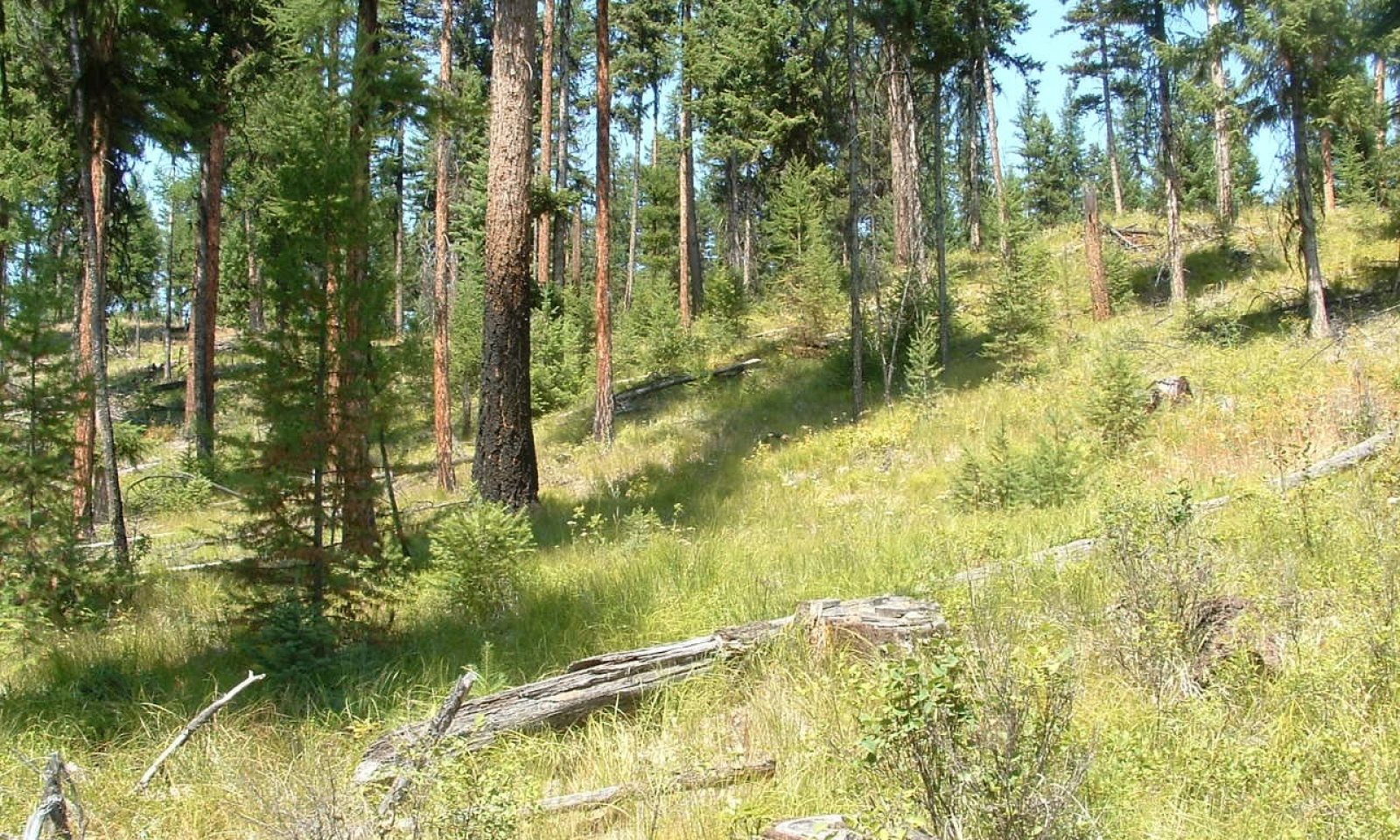
Cool Frigid Xeric Ashy Slopes (Douglas-fir Cool Dry Grass)
Scenario model
Current ecosystem state
Select a state
Management practices/drivers
Select a transition or restoration pathway
- Transition T1A More details
- Transition T1B More details
- Transition T1C More details
- Restoration pathway R2A More details
- Restoration pathway R3A More details
- Restoration pathway R4A More details
-
No transition or restoration pathway between the selected states has been described
Target ecosystem state
Select a state
Description
Reference plant community phase consists of park-like stands of large diameter Douglas-fir, western larch, and ponderosa pine. Understory is dominated by a continual sward of pinegrass. Tree regeneration is scattered. Frequent ground fires every 10-15 years cause mortality in established seedlings/saplings, mainly Douglas-fir creating sites for new seedling establishment, and perpetuate the pinegrass understory. Fire severity is low as to not cause mortality to large diameter overstory. USFS habitat type and plant association publications recognize this site as Douglas-fir/pinegrass. Douglas-fir is the dominant tree species, however, with frequent fire western larch and ponderosa pine will dominate the larger overstory. In warmer areas, western larch is absent or occasionally found in openings, and ponderosa pine becomes the major species with Douglas-fir. Also, in these warmer areas shrubs such as bearberry, pachistma, spirea, serviceberry, snowberry, bitterbrush and ceanothus spp. are abundant.
Fire exclusion has caused of this site to have high density stocking of the second level overstory from regeneration growing into pole to mature stands. This ladder fuel site condition has high potential for stand replacing fire even killing the larger older overstory.
Major insects that can cause mortality are the fir engraver, western spruce budworm, and Douglas-fir beetle. The Douglas-fir tussock moth can also cause concern. Drought and dense stands developing from prolonged fire intervals enhance beetle attack and tree mortality. The western pine beetle and the mountain pine beetle can cause mortality in ponderosa pine. Dwarf mistletoe is a major concern in western larch causing major growth loss and mortality. It will also be found on Douglas-fir, ponderosa pine, and lodgepole pine. Dwarf mistletoe was found in over 40% of the acreages in the Eastern Cascades where Douglas fir was a major stand component. Again, dense stands underneath infected trees from prolonged fire intervals causes mistletoe to spread easier. Fuel loads and ladder fuels increase fire intensity as a result.
Other diseases include Annosum, laminated, and Armillaria root rots. These root rot diseases are enhanced through soil compaction and root damage though selective logging and road building.
Forage production estimates from NRCS Range 5 Plots in Okanogan County in DF/pinegrass sites are as follows based on overstory tree canopy. Forage production figures are in pounds/acre for all vegetation below 4.5 feet (grass, sedges, forbs, shrubs, tree regeneration):
Overstory tree canopy – Forage production
0 – 20% - 800 to 1200 lbs/ac
20 – 40% - 600 – 800 lbs/ac
40 – 70% - 400 – 600 lbs/ac
70+% 0 – 400 lbs/ac
The bulk of the grass production was pinegrass and Idaho fescue. Small percentages of sedge and bluebunch wheatgrass were recorded. The most prominent forbs were lupine, basalmroot, pussytoes, and hawkweed. Shrubs included currant, snowbrush ceanothus, spirea, snowberry, kinnikinnik, and rose spp. Tree regeneration included Douglas-fir and ponderosa pine.
Submodel
Description
Since European settlement the fire regime has changed greatly reducing frequent low intensity ground fires that kept these forests more open, with reduced tree density and more resilient to severe intensity fires. In addition, years of hygrading (harvesting largest best trees on site), overgrazing, prevalence of many roads which create fire breaks, and tree plantations has created a different forest structure. Dense multi-layered forests of Douglas-fir underneath larger old pine, fir and larch now exist. Dense stands of understory Douglas-fir can have over 1000 stems per acre. This creates extensive ladder fuel conditions which lead to the potential for stand replacing fires.
Submodel
Mechanism
Fire exclusion allowing regeneration to develop underneath old overstory.
Mechanism
Time, intensive tree removal of second level DF stand followed by prescribed burning
Mechanism
Careful selection of sites to determine if tree planting success is warranted.
Model keys
Briefcase
Add ecological sites and Major Land Resource Areas to your briefcase by clicking on the briefcase (![]() ) icon wherever it occurs. Drag and drop items to reorder. Cookies are used to store briefcase items between browsing sessions. Because of this, the number of items that can be added to your briefcase is limited, and briefcase items added on one device and browser cannot be accessed from another device or browser. Users who do not wish to place cookies on their devices should not use the briefcase tool. Briefcase cookies serve no other purpose than described here and are deleted whenever browsing history is cleared.
) icon wherever it occurs. Drag and drop items to reorder. Cookies are used to store briefcase items between browsing sessions. Because of this, the number of items that can be added to your briefcase is limited, and briefcase items added on one device and browser cannot be accessed from another device or browser. Users who do not wish to place cookies on their devices should not use the briefcase tool. Briefcase cookies serve no other purpose than described here and are deleted whenever browsing history is cleared.
Ecological sites
Major Land Resource Areas
The Ecosystem Dynamics Interpretive Tool is an information system framework developed by the USDA-ARS Jornada Experimental Range, USDA Natural Resources Conservation Service, and New Mexico State University.




